One of the best known ancient legends is that of the Phrygian king Midas, who turned everything he touched into gold. According to Aristotle, he would die of hunger due to the impossibility of touching any food without it being transformed into the precious metal.
The problem is that there are at least three kings with that name. The first is that of the legend, who would have founded with his father the city of Gordio, the Phrygian capital (today the Yassıhüyük site about 80 kilometers southwest of Ankara in Turkey). Both would have been responsible for tying the famous Gordian knot which Alexander the Great later cut down with his sword.
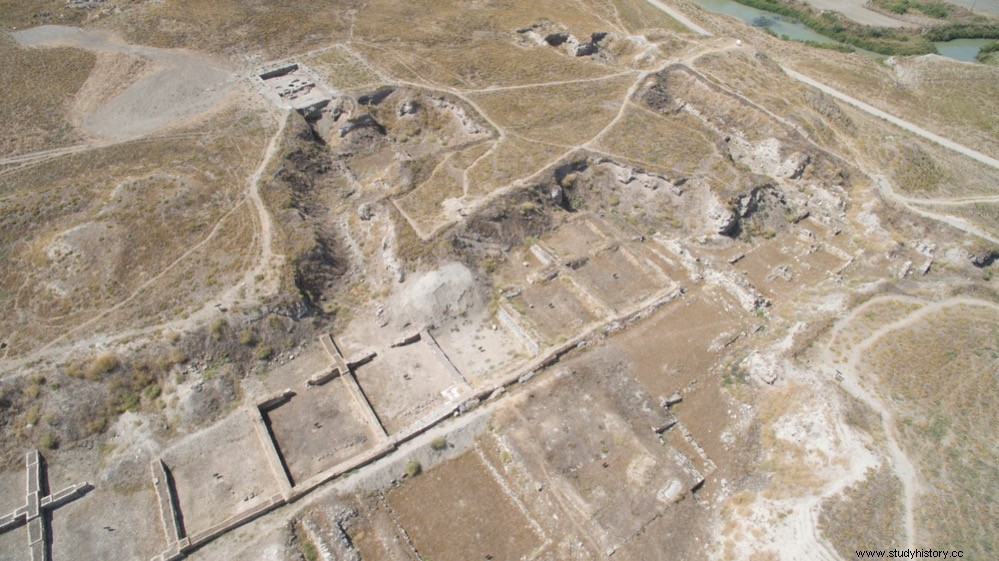
Both, father and son, would have lived around the second millennium BC, that is, before the Trojan War. However, the Iliad he does not mention either of the two and he does mention other Phrygian kings. Herodotus seems to imply that both lived before the emigration of the Phrygians from Europe to Asia Minor, when he places a Garden of Midas in Thrace. :
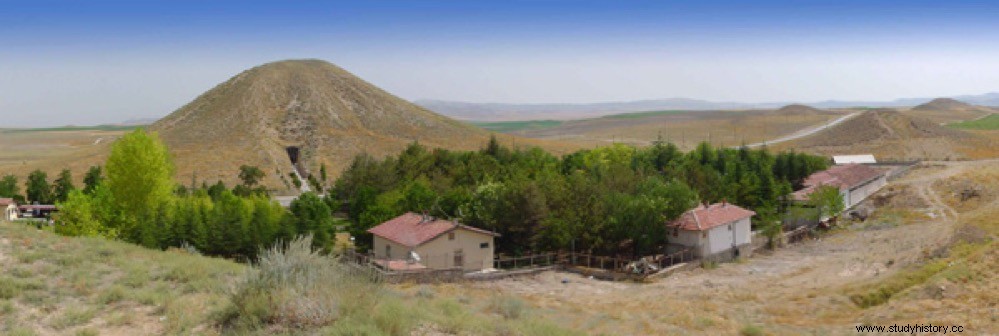
Another Midas ruled Phrygia at the end of the 8th century BC, committing suicide, according to Strabo by drinking bull's blood, when the Cimmerians ravaged Gordius around 710 BC, and who appears in Assyrian texts as Mita requesting help from King Sargon II.
Most historians believe that this is the Midas who, according to Herodotus, donated a throne to the sanctuary of Delphi, being the first foreigner to make an offering.
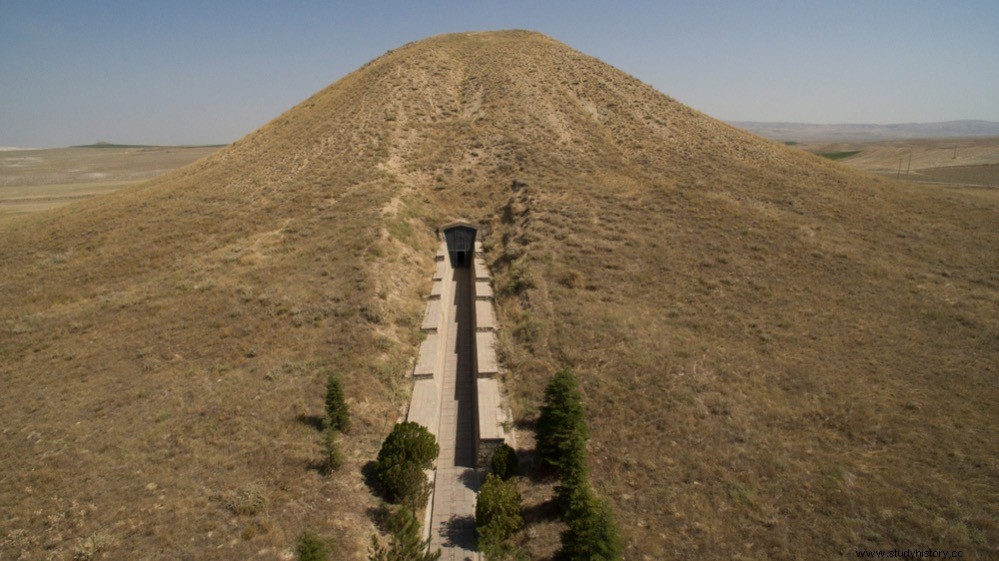
And the third Midas is the one mentioned by Herodotus as the grandfather of Adrastus, who took refuge in the Lydian court of Croesus after accidentally killing his brother. Croesus ruled between 560 and 546 BC, which gives us a chronology around the middle of the 6th century BC. for this Midas.
The location of Gordio, the Phrygian capital, was unknown until the end of the 19th century. It would be rediscovered in 1892 when the engineers who were building the Berlin-Baghdad railway branch found numerous artificial burial mounds with tombs in the place, which was being used as a quarry. They immediately notified the philologist Alfred Körte that he went there and correctly identified the site. Eight years later, in 1900, he returned together with his brother Gustav, who was an archaeologist, starting the excavations. They only stayed a year.
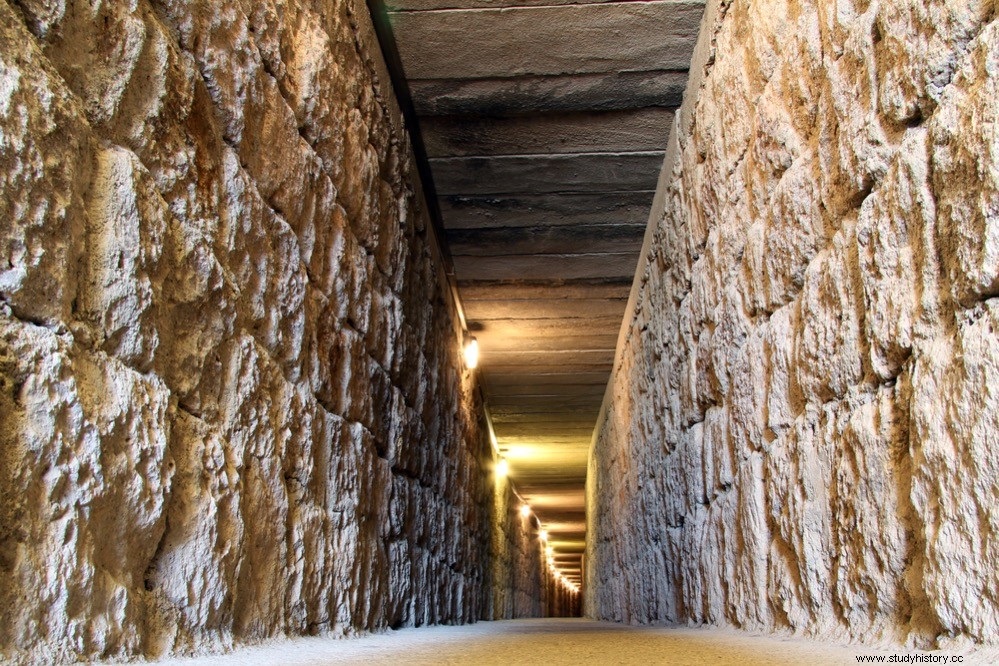
Work stalled until the University of Pennsylvania Museum of Archeology and Anthropology took over in 1950, under the direction of Rodney Young (who had previously been an Allied spy in Greece during World War II). The excavations continue today with the professor of archeology from the same university, C.Brian Rose, at the helm. Rose is also co-director of the Trojan excavations.
In 1957 Young's team found a chamber tomb under a burial mound 53 meters high and 300 meters in diameter. It would not have been anything out of the ordinary, since at the Gordio site there are more than 100 burial mounds of different periods and sizes, except that what they discovered inside was truly exceptional:a royal burial with the remains of the funeral banquet and the best collection of Iron Age vases ever discovered .
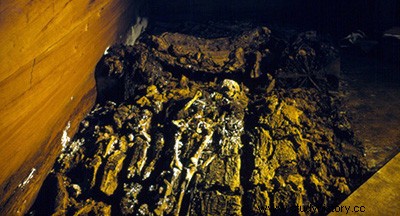
The tomb was unusually large, measuring 5.15 meters by 6.2 meters in area by 3.25 meters in height. On top of the remains of a wooden sarcophagus was a skeleton belonging to a 1.59-meter-tall man in his 60s, lying on a thick pile of blue and purple fabrics. His skull was deformed and elongated due to the application of bandages and boards since he was a child (a practice that was a symbol of royalty). It was, according to Rose, clearly a tomb built for a king, with the best carpenters, the best engineers…they built it to last forever, and somehow it did, at least for over 2,700 years . So even though there was no documentary evidence, they named it Tumulus MM, the tomb of Midas .
The floor was cedar, the interior walls pine, and the exterior walls juniper. The dating of these woods by radiocarbon and dendrochronology indicated that it had been built around 740 BC, some 30 years before the death of that Midas who had to face the Cimmerians and committed suicide watching the city fall from him. It could therefore be, according to the experts and almost certainly , the grave of his father.
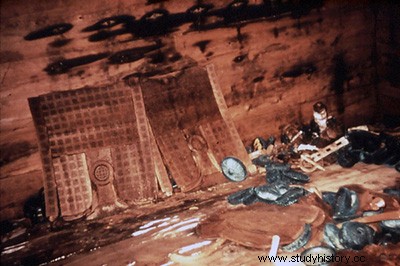
In it there was a large inlaid table and fourteen smaller ones, on which three large decorated vessels, 167 bowls, ladles and bronze jugs were arranged. Some of the bowls have their owner's name written on them.
Luckily for the archaeologists, they never bothered to wash the dishes . This allowed, already at the beginning of the 21st century, to analyze food remains with techniques such as infrared spectroscopy, liquid and gas chromatography, and mass spectrometry. For the first time in history, an entire meal could be reconstructed:spicy grilled lamb or goat stew with lentils and hints of honey and olive oil. The drink was a mixture of wine, barley beer and mead that Patrick McGovern, the director of the Biomolecular Archeology Project at the University of Pennsylvania who analyzed the samples, said was deeply yellow, like gold .
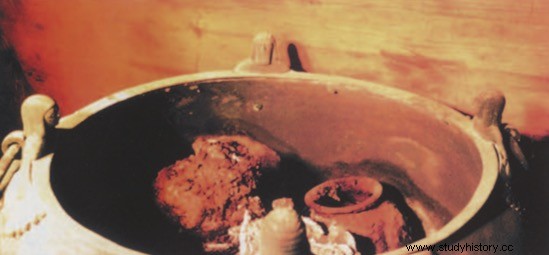
But there is more, because from the analysis of the remains of tissues from the shroud of the skeleton, and other fragments of clothing found in the tomb, archaeologists believe they have discovered the origin of the legend of that first Midas that we talked about at the beginning of the article, the one who turned everything he touched into gold.
And it is that in the tissues an iron oxide pigment called Goethite (α-Fe3+O(OH)) was found. It is a subtranslucent and opaque mineral, with reddish brown or yellowish colors that shows an adamantine or silky shine , named since 1806 in honor of the poet Goethe.
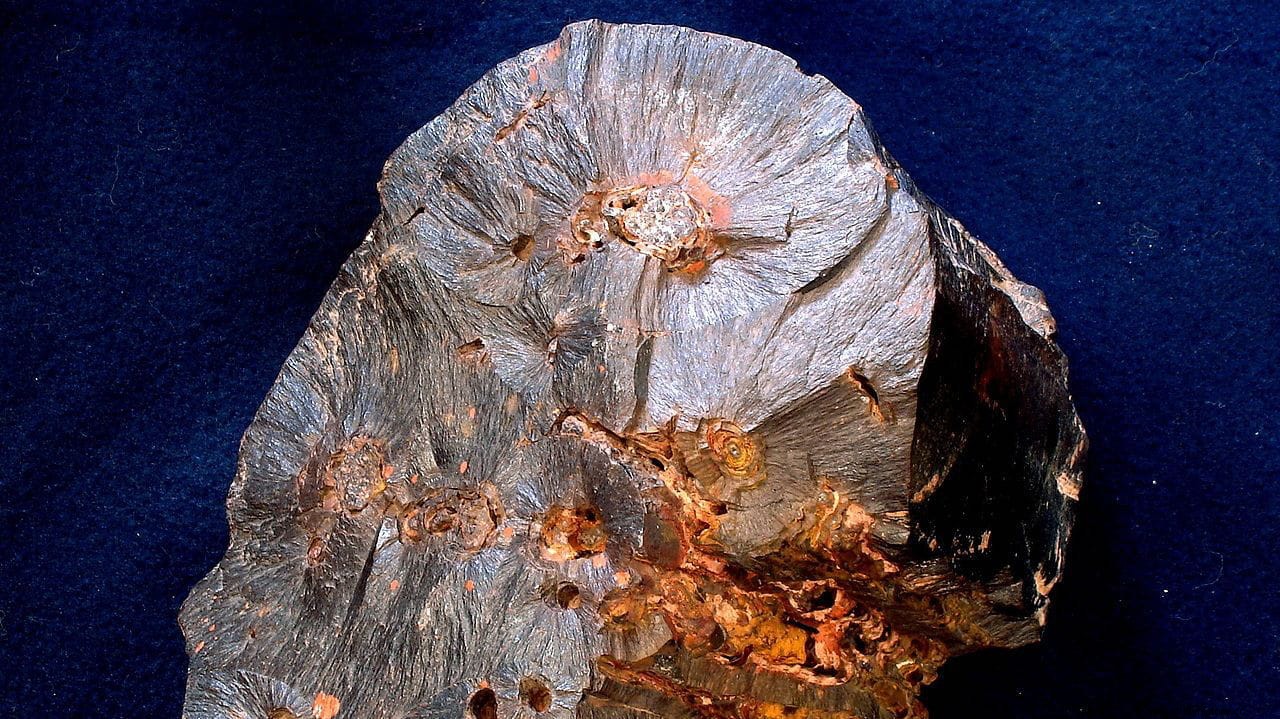
According to Professor Rose this may be the key to the legendary golden touch of Midas. Not that the Phrygians had much gold , in fact very little has been found at the site, other than that they were literally wearing…garments that looked like gold as they walked through the streets of the city . If this custom of treating garments was ancient, any foreign visitor, seeing the clothes of the Phrygians gleaming like this, would have thought that they were made of gold. And to explain this phenomenal fact, the legend of Midas would have been born, a legend that the kings themselves would have propitiated, adopting the same name generation after generation, even as a title.
Work continues in Gordio in search of the authentic tomb of King Midas (we already saw here in another article another tomb attributed to him). Only 44 of the 124 identified burial mounds have been excavated so far, so we may have more pleasant surprises in the coming years.
